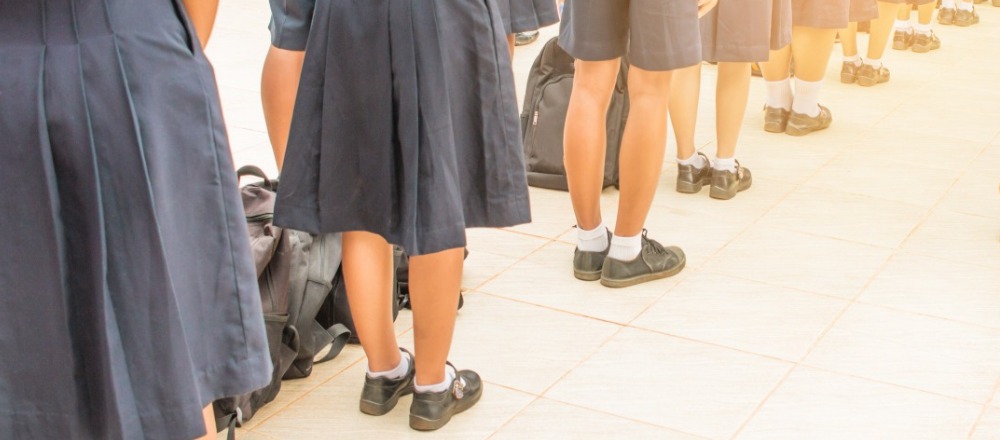Incorporating Movement Breaks

Blog Series: Managing Classroom Behaviour
Maintaining focus and managing behaviour can be challenging, especially when students are restless or have been sitting for long periods. One effective strategy to help with this is the use of movement breaks—short physical activities that allow students to release energy and refocus on their learning. Incorporating movement breaks into the school day can not only reduce restlessness but also improve behaviour and engagement in the classroom.
In this blog, we’ll explore the benefits of movement breaks and how to integrate them into your teaching routine.
Why Movement Breaks Work
Movement breaks are brief, structured opportunities for students to engage in physical activity during lessons. Research has shown that regular physical activity is linked to improved concentration, better behaviour, and higher academic performance. For many students, sitting still for long periods can lead to frustration, fidgeting, and disruptive behaviour. By incorporating movement breaks, you can help students reset and come back to their work with renewed focus and energy.
Benefits of movement breaks:
- Improve attention and focus
- Reduce disruptive behaviour
- Increase student engagement
- Support overall well-being and physical health
1. Quick Stretching or Yoga Exercises
One of the simplest ways to incorporate movement breaks is through stretching or yoga poses. These exercises can be done at students’ desks or in an open area of the classroom, and they only take a few minutes. Simple stretches like reaching up high, bending down to touch toes, or shoulder rolls can release tension and help students feel refreshed.
Tip: Incorporate breathing exercises alongside the stretches to promote calm and focus.
2. Brain Breaks with Movement
Brain breaks are short intervals designed to refresh students’ minds, and when combined with movement, they can be particularly effective in managing behaviour. Activities like jumping jacks, marching in place, or even a quick game of "Simon Says" can help students burn off excess energy and refocus on the task at hand.
Example: After 20-30 minutes of seated work, take a 2-minute brain break where students perform quick movements like clapping or stomping in a pattern. This allows them to reset without losing valuable learning time.
3. Incorporate Movement into Lessons
Movement doesn’t always have to be separate from learning. Incorporating physical activity into lessons can engage students while keeping them focused. For example, during maths lessons, students could hop to different areas of the room to solve problems on cards or move to different corners for group discussions. Movement can be seamlessly blended with learning to keep energy levels up and behaviour on track.
Tip: Use standing activities such as group rotations, where students move between different stations to complete parts of a task.
4. Dance or Music Breaks
Music and movement are great ways to give students a break from their seats while lifting their mood. A quick, energising dance break to a favourite song can break up long periods of sitting, release pent-up energy, and increase positive behaviour. You can even use slow, calming music for a gentle movement break when students need to calm down and refocus.
Tip: Use this as a reward—students are more likely to behave well if they know a fun movement break is coming.
5. Movement for Transitions
Transitions between lessons or activities are perfect opportunities for adding movement. For example, when moving from one task to another, ask students to stand and perform a quick stretch or walk to a different part of the classroom. This simple physical activity can keep students alert and help prevent disruptive behaviour as they settle into the next task.
Tip: Turn transitions into a challenge, such as "Can you walk silently to your next task in 10 seconds?" This adds fun while maintaining control.
6. Use Movement for Positive Reinforcement
Movement breaks can also be used as a reward for good behaviour. When students remain focused and on task, reward them with a few minutes of physical activity. This not only helps them release energy but also reinforces positive behaviour by associating it with something fun.
Tip: Create a “movement jar” with ideas for quick activities like jumping jacks, running on the spot, or a mini relay race. When students meet behaviour goals, they can pick an activity from the jar.
7. Whole-Class Participation
Movement breaks should involve the entire class to create a sense of community and shared responsibility for staying on task. Encourage all students to take part in movement activities, even those who may initially resist. Whole-class participation builds camaraderie and ensures that no one is singled out for being too fidgety or distracted.
Tip: Use inclusive movement activities that cater to different ability levels, ensuring that all students can participate comfortably.
8. Time Movement Breaks Wisely
While movement breaks are beneficial, timing them correctly is key. Plan movement activities during natural lulls in focus, such as after lunch or before starting a particularly challenging task. Avoid using movement breaks during high-energy lessons, as this may lead to overstimulation.
Tip: Use a timer to keep breaks short and structured. A quick 2-3 minute break can work wonders without taking away from valuable learning time.
Conclusion
Incorporating movement breaks into your classroom routine is a simple yet powerful way to manage behaviour and keep students engaged. By offering regular opportunities for physical activity, you can help students release excess energy, reduce restlessness, and refocus on their learning. Whether through stretching, dancing, or incorporating movement into lessons, these short breaks not only improve behaviour but also create a more dynamic and positive classroom environment.
Remember that movement breaks are not just a way to manage behaviour—they are also an essential part of promoting the well-being and engagement of your students.
Keywords: movement breaks, physical activity, managing behaviour, classroom focus, reducing restlessness, student engagement, active learning, classroom management, behaviour strategies, teacher support





